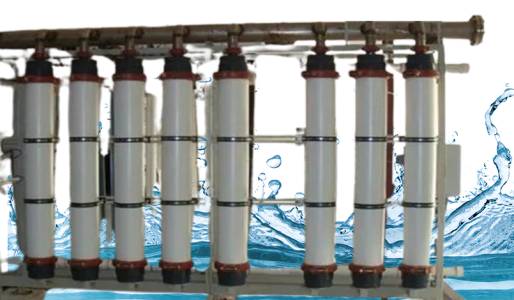Description
Ultrafiltration (UF): High-Performance Membrane Filtration
Ultrafiltration (UF) is a pressure-driven membrane process used to separate dissolved solids and suspended particles from liquids. It's a crucial technology across various industries, providing efficient and cost-effective solutions for purification, clarification, and concentration. This detailed description outlines the key features and benefits of UF systems.
How it Works:
UF utilizes semi-permeable membranes with pore sizes ranging from 0.01 to 0.1 microns. This allows the passage of water and small molecules while effectively retaining larger molecules, colloids, and suspended solids. The process is driven by applying pressure to the feed solution, forcing the permeate (filtered liquid) through the membrane. The retained material, known as the concentrate or retentate, is separated and can be further processed or disposed of.
Key Features & Benefits:
- High Efficiency: UF delivers superior separation performance compared to other membrane technologies like microfiltration, effectively removing a wide range of contaminants.
- Precise Separation: The controlled pore size allows for precise separation based on molecular weight cut-off (MWCO), enabling targeted removal of specific components.
- Low Energy Consumption: Compared to other separation techniques, UF generally requires lower energy input, making it a cost-effective solution.
- Reduced Chemical Usage: UF minimizes or eliminates the need for chemical additives, resulting in environmentally friendly operation.
- Versatile Applications: UF can be used with a wide range of feed streams, including water, wastewater, and various process liquids.
- Scalability: UF systems are readily scalable to meet diverse processing volumes, from small-scale laboratory applications to large-scale industrial operations.
- Reduced Disposal Costs: UF reduces the volume of waste needing disposal by concentrating contaminants.
- Improved Product Quality: UF significantly enhances the quality of the processed liquid by removing undesired substances, ensuring purity and extending shelf life.
Applications:
Ultrafiltration finds widespread application in diverse sectors:
- Water Treatment: Removing turbidity, bacteria, viruses, and other contaminants from municipal and industrial water sources.
- Wastewater Treatment: Treating industrial effluent and municipal wastewater to remove pollutants and improve water quality before discharge.
- Food and Beverage Industry: Clarifying juices, purifying dairy products, concentrating proteins, and separating unwanted particles.
- Pharmaceutical Industry: Purifying pharmaceuticals, removing impurities from bioprocessing streams, and concentrating valuable products.
- Biotechnology: Separating cells, proteins, and other biomolecules during various bioprocesses.
- Chemical Processing: Removing unwanted particles and contaminants from various chemical solutions.
Types of Ultrafiltration Membranes:
Several membrane types are used in UF, each with specific characteristics:
- Organic Membranes (e.g., Polyethersulfone (PES), Polyvinylidene fluoride (PVDF)): Offer excellent chemical resistance and high flux.
- Ceramic Membranes: Known for their superior durability, thermal resistance, and cleanability.
Choosing the Right UF System:
Selecting the appropriate UF system depends on several factors, including the feed characteristics, desired separation performance, processing capacity, and budget. Expert consultation is often crucial to ensure optimal system design and operation.
Conclusion:
Ultrafiltration is a powerful and versatile membrane technology with a wide range of applications. Its efficiency, cost-effectiveness, and environmental benefits make it a preferred choice for many industries seeking effective separation and purification solutions. Understanding the principles and capabilities of UF is crucial for implementing this technology successfully.
